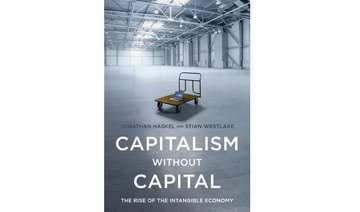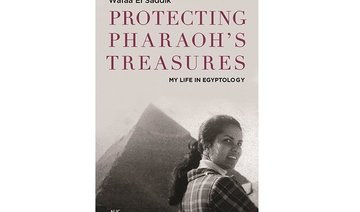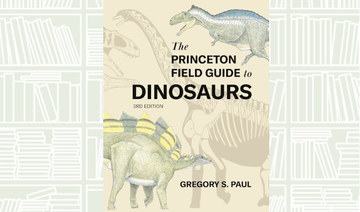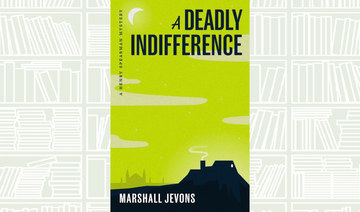Author Hala Alyan’s debut novel, “Salt Houses,” tells the harrowing tale of generations of displacement experienced by a Palestinian family. Beginning in 1967 and moving through the Six-Day War, the Lebanese Civil War, the Gulf War and eventually September 11 and its aftermath, the family, with roots in Jaffa, move to Nablus, then Kuwait, then Amman, then Paris and eventually to the US and Beirut. It is a devastating story of belonging to a home that is not accessible and of the memories that haunt them even after they attempt to put down roots elsewhere. It is a powerful novel by Alyan, who is the author of three poetry collections and has a doctorate in psychology.
The story begins in Nablus in March 1963. The family has already moved once from Jaffa, 15 years previously, and the memory of their home is still vivid and fresh as Salma remembers the silver tray her mother gave her, the walnut furniture and her husband’s books. She was forced to leave it all behind when the trouble began and begin life anew. Fifteen years later, Salma is preparing for her daughter Alia’s wedding and as she sits with her cousins and nieces before the ceremony, she waits for the coffee dregs in Alia’s cup to dry. She has already glanced into it once and what she sees is troubling.
Salma has already married off her daughter Widad, who then moved from Nablus with her husband. Although Salma had not wanted to part with Widad, she wanted her to be safe, “far from this blazing country split in two. Her unhappiness, if it came, was worth the price of her life.”
As the years go on, Salma’s children move as they marry and start families of their own. She herself moves from Nablus after fighting surges once again, the longing for her home, for her life in Jaffa, never leaves her. “Salma missed her home with a tenacity that never quite abated. She spent the first years in Nablus daydreaming of returning.”
Alyan’s book is hard-hitting and elegant. There is a calm breeze that flows through her writing, even though the story she tells is one that is heartbreaking. It is as if her story is being written in the eye of a storm as she details the chaos that surrounds the lives of displaced people from Palestine. As she writes of fig trees and jasmine lacing the air, she also writes of refugee camps, war, longing, loss and death.
Alyan has named each chapter in her book after her characters. Between Alia, Atef, Mustafa, Riham, Manar, Souad and others, the reader learns their stories from the perspective of various members of each generation, each feeling loss and displacement in their own way. It is an incredible way to tell the story, as the impact of leaving one’s home and not being allowed to return is felt through generations of people over the years.
Alyan’s prose is poetic and crisp as her story travels between the men at mosques in Nablus, to the women in the parlors of Kuwait and then on to Paris and the US. Her writing, like her characters, has a seamless ability to adapt and move.
She writes of gender discrimination as subtly and powerfully as she writes of social discrimination, comparing the displaced who have money and have the freedom to move around to those who do not have the means to leave and must face life in a war zone. The circumstances of life change the mindset of men and women, which Alyan portrays devastatingly. She makes it clear that customs and traditions are made for those who can afford them and, as for the poor, they “had their faith, but their lives were hard and bitter and full of death.”
She writes of the rich cultures and traditions that make up a multi-faceted Middle East, each person adding a layer to its make-up, from various Arab nations to those who seek employment from South and East Asia.
Alyan’s recalls images of war — of tanks and bombs, of gunfire and bodies — in Nablus and the Sinai Peninsula, then in Lebanon and in Kuwait during the Gulf War, as if the family cannot escape it. When Alia and her husband are deciding where to move after being forced to leave Nablus, Alia wants to move to Amman, but Atef does not because “in Amman, it’s the same people, the old neighbors, the people we grew up with. How can we return to that? How can we look at them without remembering?”
The sorrow is relentless as each generation faces its own tragedy of war and loss. The grandchildren of Alia, for whom Palestine is only a distant dream, also face discrimination for something that happened decades before they were born. It is distressing to read, but also uplifting. Alyan’s characters adapt to life and live despite displacement and the wars. They crave life and home and have instilled the same longing in their children even though “Palestine was something raw in the family, a wound never completely scabbed over.”
Alyan has a way of writing that makes a reader feel as if the experiences written about are their own. She writes of powerful images and emotions, each story of each member of the family different and unique, each flawed and perfect in their own way.
Alyan’s book will resonate with people who have felt as if their belonging has always floated alongside them but has never been able to take root. The countless generations of those displaced due to war or lack of opportunity, who find themselves in countries that are not their original home but are forced to make them their homes, will find solace in this book. It is an ever-present reminder that decades later, there is still a tragic story unfolding in Palestine and that it is not just a disputed territory on a map, it is home to generations and generations of people who have lived there, died there, loved there and will continue to live out their lives and their stories.
Book Review: Running away with nowhere to run
Book Review: Running away with nowhere to run

What We Are Reading Today: ‘Quantitative Biosciences Companion in Python’
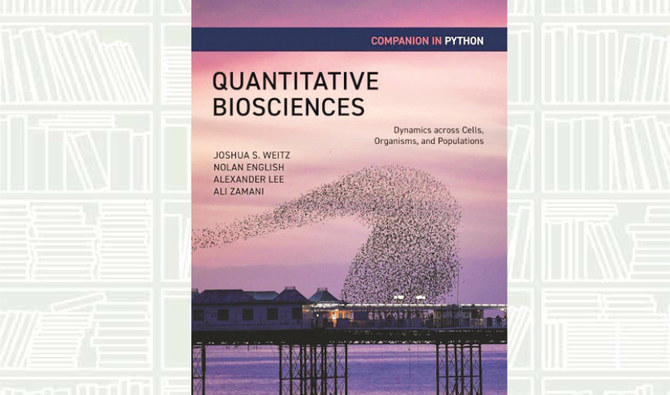
Authors: JOSHUA S. WEITZ, NOLAN ENGLISH, ALEXANDER LEE, AND ALI ZAMANI
This lab guide accompanies the textbook “Quantitative Biosciences,” providing students with the skills they need to translate biological principles and mathematical concepts into computational models of living systems.
This hands-on guide uses a case study approach organized around central questions in the life sciences, introducing landmark advances in the field while teaching students—whether from the life sciences, physics, computational sciences, engineering, or mathematics—how to reason quantitatively in the face of uncertainty.
What We Are Reading Today: Heart of Darkness: Unraveling the Mysteries of the Invisible Universe
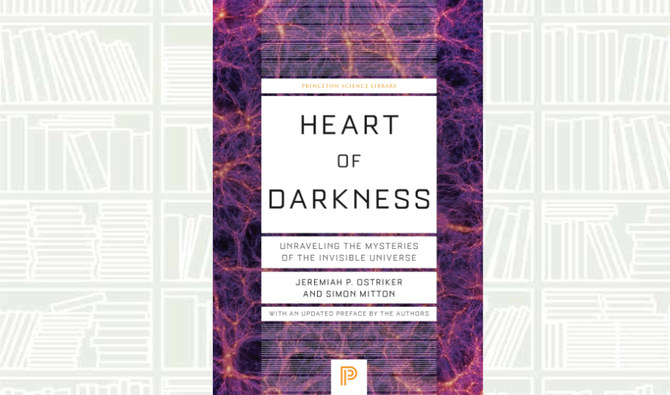
- The story of how evidence for the so-called “Lambda-Cold Dark Matter” model of cosmology has been gathered by generations of scientists throughout the world is told here by one of the pioneers of the field, Jeremiah Ostriker, and his coauthor Simon Mitton
Authors: Jeramiah P. Ostriker and Simmon Mitton
Heart of Darkness describes the incredible saga of humankind’s quest to unravel the deepest secrets of the universe. Over the past 40 years, scientists have learned that two little-understood components—dark matter and dark energy—comprise most of the known cosmos, explain the growth of all cosmic structure, and hold the key to the universe’s fate.
The story of how evidence for the so-called “Lambda-Cold Dark Matter” model of cosmology has been gathered by generations of scientists throughout the world is told here by one of the pioneers of the field, Jeremiah Ostriker, and his coauthor Simon Mitton.
From humankind’s early attempts to comprehend Earth’s place in the solar system, to astronomers’ exploration of the Milky Way galaxy and the realm of the nebulae beyond, to the detection of the primordial fluctuations of energy from which all subsequent structure developed, this book explains the physics and the history of how the current model of our universe arose and has passed every test hurled at it by the skeptics.
This monumental puzzle is far from complete, however, as scientists confront the mysteries of the ultimate causes of cosmic structure formation and the real nature and origin of dark matter and dark energy.
What We Are Reading Today: ‘A Natural History of Shells’ by Geerat Vermeij

Geerat Vermeij wrote this “celebration of shells” to share his enthusiasm for these supremely elegant creations and what they can teach us about nature.
Most popular books on shells emphasize the identification of species, but Vermeij uses shells as a way to explore major ideas in biology.
How are shells built? How do they work? And how did they evolve?
With lucidity and charm, the MacArthur-winning evolutionary biologist reveals how shells give us insights into the lives of animals today and in the distant geological past.
What We Are Reading Today: The Princeton Field Guide to Dinosaurs

Author: Gregory S. Paul
The bestselling “Princeton Field Guide to Dinosaurs” remains the must-have book for anyone who loves dinosaurs, from amateur enthusiasts to professional paleontologists. Now extensively revised and expanded, this dazzlingly illustrated large-format edition features nearly 100 new dinosaur species and hundreds of new and updated illustrations, bringing readers up to the minute on the latest discoveries and research that are radically transforming what we know about dinosaurs and their world.
What We Are Reading Today: The Virtue Proposition by Sig Berg
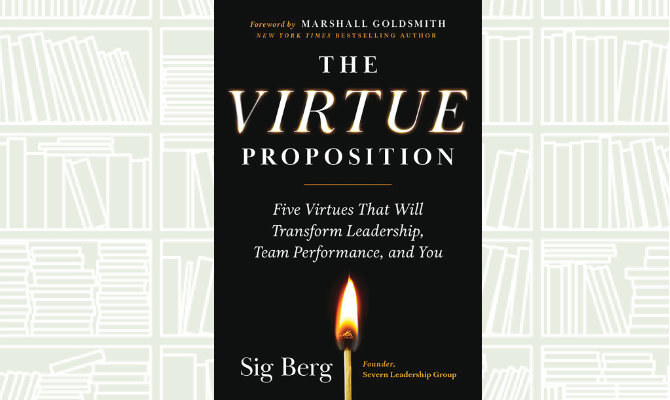
Sig Berg, founder of the Severn Leadership Group, explains what’s missing from traditional leadership, with its emphasis on the rules and rituals of boardrooms and C-suites, and from iconoclastic leadership, which urges you to move fast and break things.
Neither of these embrace virtues, and neither has, nor ever will, deliver consistent superior results.
There is a courageous third way: virtuous leadership.
This book speaks to men and women who witness the absence of virtues and know they can do better, says a review published on goodreads.com.


